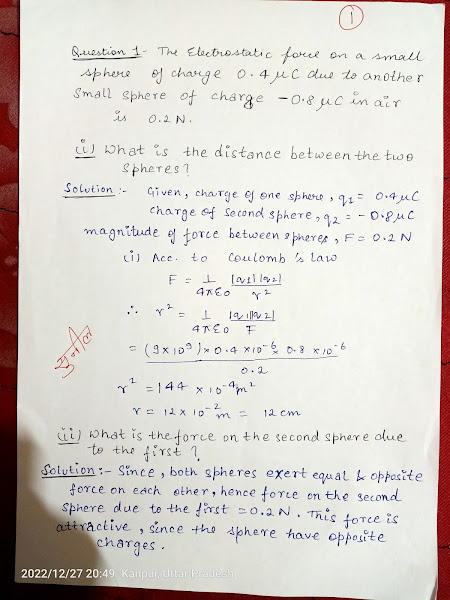LIST OF EXPERIMENT CLASS-XII-KV NO.2 INDORE
KENDRIYA VIDYALAYA NO.2 BSF INDORE (MP)
SESSION-2012-13
CLASS-XII (Physics)
Evaluation Scheme for Practical Examination:
Two experiments one from each section 8+8 Marks
Practical record (experiments & activities) 6 Marks
Project 3 Marks
Viva on experiments & project 5 Marks
Total 30 Marks
SECTION A
Experiments
E1. To find resistance of a given wire using metre bridge and hence determine the specific resistance of its material
E2. To determine resistance per cm of a given wire by plotting a graph of potential difference versus current.
E3. To verify the laws of combination (series/parallel) of resistances using a metre bridge.
E4. To compare the emf of two given primary cells using potentiometer.
E5. To determine the internal resistance of given primary cell using potentiometer.
E6. To determine resistance of a galvanometer by half-deflection method and to find its figure of merit.
E7. To convert the given galvanometer (of known resistance and figure of merit) into an ammeter and voltmeter of desired range and to
verify the same.
Activities
A1. To measure resistance, voltage (AC/DC), current (AC) and check continuity of a given circuit using multimeter.
A2. To assemble a household circuit comprising three bulbs, three (on/off) switches, a fuse and a power source.
A3. To assemble the components of a given electrical circuit.
A4. To study the variation in potential drop with length of a wire for a steady current.
A5. To draw the diagram of a given open circuit comprising at least a battery, resistor/rheostat, key, ammeter and voltmeter.
Mark the components that are not connected in proper order and correct the circuit and also the circuit diagram.
SECTION B
Experiments
E8. To find the value of v for different values of u in case of a concave mirror and to find the focal length.
E9. To find the focal length of a convex mirror, using a convex lens.
E10. To find the focal length of a convex lens by plotting graphs between u and v or between 1/u and 1/v.
E11. To determine angle of minimum deviation for a given prism by plotting a graph between angle of incidence and angle of deviation.
E12. To determine refractive index of a glass slab using a travelling microscope.
E13. To find refractive index of a liquid by using (i) concave mirror, (ii) convex lens and plane mirror.
E14. To draw the I-V characteristic curve of a p-n junction in forward bias and reverse bias.
E15. To draw the characteristic curve of a zener diode and to determine its reverse break down voltage.
Activities (For the purpose of demonstration only)
A6. To identify a diode, an LED, a transistor, and IC, a resistor and a capacitor from mixed collection of such items.
A7. To observe refraction and lateral deviation of a beam of light incident obliquely on a glass slab.
A8. To observe polarization of light using two Polaroids.
A9. To observe diffraction of light due to a thin slit.
A10. To study the nature and size of the image formed by (i) convex lens (ii) concave mirror, on a screen by using a candle and a screen
(for different distances of the candle from the lens/mirror).
SUGGESTED INVESTIGATORY PROJECTS
1 To study various factors on which the internal resistance/emf of a cell depends.
2. To find the refractive indices of (a) water (b) oil (transparent) using a plane mirror, a equiconvex lens,
(made from a glass of known refractive index) and an adjustable object needle.
3. To design an appropriate logic gate combination for a given truth table.
4. To investigate the relation between the ratio of (i) output and input voltage and
(ii) number of turns in the secondary coil and primary coil of a self designed transformer.
5. To estimate the charge induced on each one of the two identical styro foam (or pith) balls suspended in a vertical plane by making
use of Coulomb's law.
6. To set up a common base transistor circuit and to study its input and output characteristic and to calculate its current gain.
7. To study the factor, on which the self inductance, of a coil, depends, by observing the effect of this coil, when put in series with a
resistor/(bulb) in a circuit fed up by an a.c. source of adjustable frequency.
8. To study the earth's magnetic field using a tangent galvanometer. SUNEEL



Comments